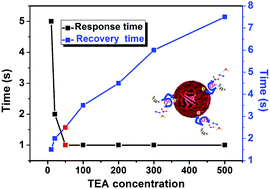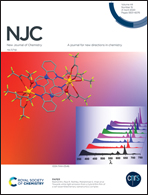Novel malonic acid assisted synthesized porous Fe2O3 microspheres for ultra-fast response and recovery toward triethylamine†
Abstract
Triethylamine (TEA) is extensively used in the industrial field and its concentration is closely related to the freshness of seafood. Therefore, there is a tremendous potential safety risk for TEA to threaten both the environment and human health; so, it is urgent for us to construct an ultra-fast response/recovery TEA sensor. In this paper, porous Fe2O3 microspheres were obtained by annealing the precursors in an air atmosphere. The macroscopic/microstructural characteristics of the samples were elucidated by means of comprehensive characterization. The repeated sensing results manifested that the porous Fe2O3 microsphere-based sensor has faster detectability (1 s/2.5 s to 50 ppm TEA at 270 °C) than almost all TEA monitoring materials. The excellent gas sensing performance is mainly ascribed to the unique perforated structure of the microspheres, which can vastly shorten the testing time to ensure that relevant emergency measures can be launched in time. The sensor based on the Fe2O3 microspheres also exhibited excellent continuous testing capability and long-term test stability. The thorough and reasonable TEA sensing mechanism is discussed in detail.



 Please wait while we load your content...
Please wait while we load your content...